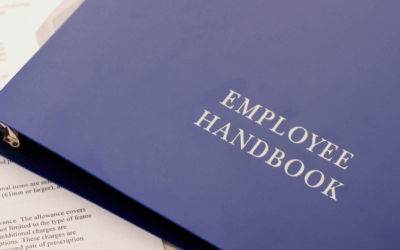If you’re seeing turnover creep up, projects stall, or managers saying “my team is burned out,” you’re not alone. Engagement can feel slippery: you try a survey, throw a few perks in the mix, and still don’t see lasting change. Hybrid routines create friction, expectations get fuzzy, and recognition is inconsistent. The result is predictable — uneven performance, rising costs, and exhausted leaders wondering what to fix first.
This guide cuts through the noise. You’ll get 12 proven strategies that any growing company can put to work — with clear “why it works,” step-by-step “how to implement,” defined ownership, and metrics to track. We’ll cover the essentials that move the needle: manager coaching rhythms, crystal-clear expectations, tools and autonomy, strengths-based growth, timely recognition, continuous listening, onboarding that builds belonging, hybrid team agreements, wellbeing, inclusion, and tying it all to business outcomes. No fads or fluff — just practical routines that build trust and performance. And if you want a partner in your corner, we’ll show how an outsourced HR team like Soteria HR can build a custom engagement roadmap for you. Let’s get to what works.
1. Build a custom engagement roadmap with an outsourced HR partner (Soteria HR)
If engagement feels like whack‑a‑mole, you don’t need more perks — you need a plan. A custom roadmap turns scattered efforts into a clear sequence of priorities, owners, and timelines. With Soteria HR, you get an embedded partner that aligns engagement with growth, compliance, and the way your teams actually work.
Why this works
Engagement lifts when purpose, development, manager coaching, ongoing conversations, and strengths are built into daily routines — not side projects. Research shows managers drive most of the variance in team engagement, so a roadmap that equips them is non‑negotiable. An outsourced HR partner designs the system, trains leaders, and keeps execution on track.
How to implement it
Start by grounding the roadmap in real data and business goals, then sequence high‑leverage changes you can sustain.
- Diagnose: run a baseline (pulse, interviews, turnover/absenteeism), including “expectations,” “tools,” and “do what I do best” items.
- Align: tie engagement priorities to outcomes (retention, customer impact, safety/quality).
- Build: 90‑day sprint + 12‑month plan with owners, cadences, and comms.
- Enable: manager toolkits (1:1s, feedback, recognition), handbook updates, team agreements.
- Govern: quarterly reviews, pulse checks, and course‑corrections.
Who owns it
Executive sponsorship keeps engagement a business priority; Soteria HR drives design and delivery; managers make it real.
- Executive sponsor: CEO/COO to set vision and remove roadblocks.
- Soteria HR lead: fractional HRBP to run the roadmap and coach leaders.
- People ops/admin: coordinate surveys, training, and comms.
- Managers: execute team routines and close the loop on actions.
Metrics to track
Measure both leading behaviors and lagging outcomes so you can adjust fast.
- Engagement index: Q12-style items (e.g., expectations, materials, strengths).
- Manager rhythms: % of monthly 1:1s completed; feedback/recognition frequency.
- Retention/attendance: voluntary turnover and absenteeism rates.
- New hire ramp: time‑to‑productivity and 90‑day retention.
- Safety/quality: incident and defect rates where applicable.
- Follow‑through: action plan completion and pulse participation.
2. Equip managers to coach through regular 1:1s and feedback
Managers are your engagement engine. To improve employee engagement at scale, make 1:1s and real-time feedback a weekly management habit that keeps people supported, seen, and accountable.
Why this works
Managers drive most of the variance in team engagement. Ongoing coaching—clarity, resources, recognition, and strengths—turns daily work into momentum, lifting productivity, retention, safety, and customer outcomes.
How to implement it
Keep it simple and consistent. Standardize a lightweight cadence and tools managers can use in 30 minutes.
- Set the cadence: weekly or biweekly 25–30 min 1:1s.
- Use a shared agenda: priorities, blockers, wins, growth.
- Teach feedback + strengths: SBI/STAR and coaching questions.
- Capture decisions: document next steps; review next week.
Who owns it
Coaching is a leadership standard. Make roles clear so support and accountability stick.
- Executives: set expectations; inspect the rhythm.
- People Ops/Soteria HR: train, tool, and spot‑check.
- Managers + employees: co‑own agendas and follow‑through.
Metrics to track
Measure the habit and the impact. Blend leading and lagging indicators.
- 1:1 completion/on‑time rate by manager.
- Feedback/recognition frequency per employee.
- Pulse items on manager support and progress.
- Team outcomes: retention, absenteeism, safety/quality.
3. Set crystal-clear expectations and shared goals
Ambiguity crushes engagement. People can’t win a game when the rules keep changing. One of the fastest ways to improve employee engagement is to make expectations unmistakable and connect every role to shared outcomes. When work is defined and visible, momentum follows and stress drops.
Why this works
Clarity is foundational — it’s the first element in leading engagement models (“I know what’s expected of me at work”). When managers make expectations and goals explicit, employees focus better, ask for the right resources, and deliver higher-quality work. Shared goals align effort and reduce rework.
How to implement it
Keep expectations simple, written, and revisited in your existing rhythms.
- Define outcomes: 3–5 role outcomes with clear success measures.
- Spell out standards: “Definition of Done” for recurring work.
- Set quarterly goals: Team goals tied to business priorities.
- Align weekly priorities: Review progress/blockers in 1:1s.
- Make it visible: Owner, due date, status on a shared board.
Who owns it
Everyone plays a part, with managers turning strategy into clarity.
- Executives: Set direction and non-negotiables.
- Managers: Translate strategy into role expectations and team goals.
- Employees: Confirm understanding, surface risks, and commit to next steps.
- People Ops/Soteria HR: Provide templates, training, and audits for consistency.
Metrics to track
Measure clarity, follow-through, and business impact.
- Clarity pulse: “I know what’s expected of me” item.
- Goal coverage: % employees with documented quarterly goals.
- On-time delivery: Commitments met vs. planned.
- Rework/priority churn: Changes after work starts (trend down).
4. Give people the tools and autonomy to do their best work
If you want to improve employee engagement, give top performers two things: the right tools and permission to use them. Remove friction, clarify decision rights, and people ship better work faster with fewer handoffs and less burnout.
Why this works
Engagement climbs when employees have the materials and equipment they need to do their jobs right. Research also ties engaged teams to fewer safety incidents and quality defects; coupling resources with real autonomy unlocks initiative and accountability.
How to implement it
Start by eliminating blockers, then invest where work repeatedly stalls. Define the boundaries so people can choose the how without risking compliance.
- Run a 30-day tools and access audit.
- Standardize core apps; retire duplications.
- Streamline approvals and permissions SLAs.
- Document decision rights: guardrails, not gates.
Who owns it
Provisioning is cross-functional, so clarity matters. Give each group a lane and an SLA.
- Managers: surface needs, prioritize requests.
- IT/Ops: provision, secure, maintain.
- Finance: fund value, nix bloat.
- Soteria HR: policy, access, training.
Metrics to track
Track enablement and outcomes, not just licenses. Look for faster flow and fewer defects.
- Engagement pulse: tools/resources item.
- Request-to-fulfill time (SLA).
- Cycle time/throughput by team.
- Safety/quality incidents trend.
5. Build strengths-based growth and career paths
People engage when they get to do what they do best and see a future with you. Shift from vague “career talks” to a clear, strengths‑based system that maps roles, skills, and next steps — then back it with manager coaching and real opportunities.
Why this works
Development and using strengths every day are core drivers of engagement. When employees see a path and regularly apply their best talents (“I have the opportunity to do what I do best”), performance, retention, and discretionary effort rise.
How to implement it
Start small, make it visible, and build into weekly rhythms.
- Map role outcomes to strengths: Define what great looks like by role.
- Create simple IDPs: 12‑month goals, skills, and stretch assignments.
- Offer lattices, not ladders: Lateral moves, projects, and mentorships.
- Build a 70‑20‑10 learning mix: On‑the‑job, coaching, and courses.
Who owns it
Make ownership explicit so growth doesn’t stall.
- People Ops/Soteria HR: Frameworks, libraries, and program cadence.
- Managers: Coach to strengths; assign and debrief stretch work.
- Employees: Own IDPs; track progress and asks.
Metrics to track
Measure access, usage, and outcomes — then adjust quarterly.
- Q03 pulse: “Do what I do best” item.
- IDP coverage/quality: % complete and reviewed quarterly.
- Internal mobility rate: Lateral moves and promotions.
- Regrettable turnover of high performers: Trend down.
6. Make recognition timely, specific, and inclusive
Recognition is oxygen for performance, but only when it’s fast, specific, and fair. Make it a daily habit — not a quarterly ceremony — so more people feel seen and motivated to repeat the right behaviors.
Why this works
Recognition is a core engagement driver (think: “someone notices great work”). Research ties engaged teams to stronger outcomes, and recognition fuels the habits that get you there. When it’s inclusive, it builds belonging across roles, locations, and work styles.
How to implement it
Keep it lightweight and frequent. Use tech to scale, not to sanitize sincerity.
- Make it fast: Shout out wins within 24–72 hours.
- Make it specific: Name the behavior, impact, and value it reflects.
- Make it inclusive: Rotate across roles, shifts, and locations.
- Make it visible: Share wins in standups, all‑hands, and team channels.
Who owns it
Leaders set the tone; managers make it routine; everyone participates.
- Executives: Model and fund simple recognition systems.
- Managers: Weekly callouts in team meetings and 1:1s.
- Peers: Open, peer‑to‑peer nominations; easy-to-use kudos tools.
Metrics to track
Track reach, speed, equity, and impact — then tune.
- Coverage: % employees recognized monthly.
- Time-to-recognition: Days from achievement to shoutout.
- Distribution: By role, location, shift (no favoritism).
- Pulse item: “I received meaningful recognition recently.”
7. Listen continuously and act on feedback
Listening is only half the job. Acting on what you hear is what improves employee engagement and trust. Over-surveying with little follow‑through breeds cynicism; consistent, closed‑loop action builds credibility and momentum.
Why this works
Ongoing conversations are a core engagement driver, and managers account for most of the variance in team engagement. Continuous listening surfaces blockers early; visible action signals respect and reduces burnout, rework, and turnover.
How to implement it
Build a simple, repeatable system — listen, decide, act, tell.
- Run a cadence: quarterly pulse + annual deep dive, with an always‑on suggestion channel.
- Do stay interviews: prioritize critical roles; summarize themes, not anecdotes.
- Co‑prioritize 2–3 fixes per team within 30 days; assign owners and timelines.
- Close the loop: publish “You said/We did” updates in all‑hands and team channels.
Who owns it
Shared responsibility with clear lanes.
- Executives: model transparency and remove roadblocks.
- People Ops/Soteria HR: design the cadence, facilitate neutrally, track actions.
- Managers + employees: co‑create priorities in 1:1s and team forums; report progress.
Metrics to track
Measure speed, coverage, and impact.
- Pulse participation and trend on “my opinions count.”
- Time‑to‑action from survey to first change; action completion rate.
- Stay‑interview coverage and themes addressed per quarter.
- Retention/absenteeism deltas in teams that complete action plans.
8. Design onboarding that builds belonging from day one
Onboarding is your first real chance to improve employee engagement. Don’t just teach systems; connect people to purpose, make expectations unmistakable, and build relationships fast. When new hires feel welcome, equipped, and clear on how to win, they ramp faster and stick around longer.
Why this works
Belonging grows when core engagement needs are met early: purpose, a caring manager, ongoing conversations, and using strengths. Hitting the Q12-style basics on day one — clear expectations, the right materials, and chances to do what they do best — creates momentum instead of doubt.
How to implement it
Give new hires a structured, human experience that starts before day one and closes the loop often.
- Preboard: send welcome, tech/logins, 30/60/90 draft, first-week schedule.
- Day 1 clarity: mission, values-in-action, role outcomes, “Definition of Done.”
- Equip quickly: tools, access, and a simple how-to hub.
- Buddy system: peer guide for norms and networks.
- Manager cadence: weekly 1:1s for the first 8 weeks.
- Early win: meaningful project that uses strengths.
- Cross‑team intros: map stakeholders and decision paths.
- Feedback loops: new‑hire pulses at weeks 2, 4, and 8; act and share “You said/We did.”
Who owns it
- Executives: welcome message and culture signal.
- People Ops/Soteria HR: design the program, coordinate, measure.
- Hiring manager: deliver clarity, coaching, and early wins.
- Buddy/team: socialize norms and unblock quickly.
Metrics to track
- New‑hire pulse: clarity, tools, and belonging items.
- 90‑day plan completion and first‑milestone delivery.
- Time‑to‑productivity by role.
- 90‑day retention and first‑year regrettable turnover.
9. Support hybrid and flexible work with clear team agreements
Flexibility boosts loyalty — confusion kills it. Hybrid works when teams make the “how we work” rules explicit: when to meet live, what’s async, how fast to respond, and why/when we come on-site. Clear agreements reduce friction, protect focus time, and keep flexibility from turning into burnout.
Why this works
Hybrid engagement rises when managers create ongoing conversations, clarity, and support. Research shows managers drive about 70% of engagement variance, and modern teams need evolved practices — not office-era habits — to thrive remotely.
How to implement it
Co-create a one-page team agreement, review quarterly, and publish where work happens.
- Core hours and time‑zone norms
- Response‑time SLAs and channels by purpose
- Meeting rules: fewer, shorter, with agendas/notes
- Async first: tool of record and documentation
- On‑site cadence with a clear purpose (e.g., kickoff)
Who owns it
Leaders bless flexibility; managers make it real; ops keeps it smooth.
- Executives: set guardrails and trust-first principles
- Managers + teams: draft, test, and refine agreements
- People Ops/IT: tools, training, and security/compliance
Metrics to track
Measure clarity, flow, and fairness — then tune.
- Pulse items on expectations, tools, and belonging
- Meeting load and protected focus-time ratio
- Retention/absenteeism and delivery predictability by team
10. Care for the whole person with wellbeing, benefits, and balance
If you want to improve employee engagement, protect energy first. Burned‑out teams make more mistakes, miss more days, and leave sooner. Engaged employees report far higher wellbeing and fewer safety and quality issues — because they’re supported, equipped, and not running on fumes.
Why this works
Wellbeing is foundational. When people feel cared for by a manager, have ongoing conversations, and can use their strengths without constant strain, engagement and performance rise. The payoff shows up in lower absenteeism, fewer incidents, and better customer outcomes.
How to implement it
Start with essentials, then normalize boundaries and workload hygiene.
- Align benefits to real needs: medical, mental health, EAP, financial wellness.
- Make PTO usable: minimums, blackout clarity, visible coverage plans.
- Set team norms: focus-time blocks, meeting rules, off-hours expectations.
- Train managers to spot overload and rebalance work early.
- Offer flexible work options within clear guardrails.
Who owns it
- Executives: model balance and fund benefits that matter.
- People Ops/Soteria HR: design programs, policies, vendor management.
- Managers: plan capacity, honor PTO, reinforce norms.
- Employees: use benefits, set availability, flag workload risks.
Metrics to track
- Pulse items on workload, stress, and manager care.
- PTO usage/distribution and after-hours activity trends.
- Absenteeism, safety/quality incidents, and retention.
- EAP/benefit utilization (aggregate, privacy‑safe) and burnout risk signals.
11. Foster inclusion and psychological safety
Inclusion and psychological safety are the ground rules that let people speak up, take smart risks, and do their best thinking. Without them, engagement programs fall flat—voices go quiet, innovation stalls, and avoidable mistakes linger. Build a culture where every person is respected and heard, and you’ll see steadier performance and stronger retention.
Why this works
Feeling valued by a caring manager and knowing your opinions count are core drivers of engagement. Psychological safety enables the ongoing conversations great teams rely on, which is why engaged teams typically deliver better productivity, retention, safety, and quality outcomes.
How to implement it
Start with clear norms, skilled facilitation, and visible follow‑through so trust compounds.
- Set meeting norms (no‑interrupt, round‑robin, chat input) and document them.
- Train managers on inclusive facilitation, bias interrupters, and how to respond to bad news.
- Offer safe channels (async/anonymous) and publish “You said/We did” actions.
- Calibrate performance and pay decisions; review promotion/comp data quarterly.
- Enforce zero‑tolerance for disrespect; clear reporting paths and prompt, fair follow‑up.
- Support peer networks/ERGs and mentorship to broaden access to opportunities.
Who owns it
Inclusion is everyone’s job, with leaders setting the tone and managers making it real.
- Executives: model vulnerability, set standards, fund training and time.
- Managers: run inclusive rituals, invite dissent, protect speaking up.
- People Ops/Soteria HR: policies, training, reporting, and equity audits.
- Employees: practice the norms, amplify quieter voices, give and receive feedback well.
Metrics to track
Blend perception, behavior, and equity indicators—and act fast on gaps.
- Pulse items: belonging and “my opinions count.”
- Recognition and high‑visibility work distribution by role/location.
- Hiring, promotion, and pay‑equity trends (quarterly review).
- Retention gaps and exit‑interview themes tied to inclusion.
- Meeting participation coverage (e.g., % voices heard per meeting).
12. Tie engagement to business outcomes with metrics and accountability
Engagement is not a vibe; it’s a performance system. To improve employee engagement for real, connect it to the results leaders already care about — retention, productivity, quality, safety, and customer outcomes — then hold managers (and yourself) accountable for the few behaviors that move those numbers.
Why this works
Research shows engaged teams deliver stronger outcomes, including higher productivity and profitability, with less absenteeism, turnover, safety incidents, and quality defects. Managers drive most of the variance, so measuring the right drivers — and acting on them — compounds results faster than chasing vanity scores.
How to implement it
Build a simple “metrics-to-actions” operating rhythm that leaders can run every month.
- Define 3–5 business outcomes to improve (e.g., retention, delivery, quality).
- Use a concise engagement index (clarity, tools, strengths) plus behavior metrics (1:1s, recognition frequency).
- Create a team scorecard with outcomes, driver scores, and 30‑day commitments.
- Review monthly, publish quarterly “You said/We did,” and cut pulses you won’t action.
- Link manager evaluations/bonuses to scorecard progress, not survey favorability.
Who owns it
Make ownership explicit so action sticks.
- Executive sponsor: sets targets, clears roadblocks.
- People Ops/Soteria HR: design index, enable reviews, audit follow‑through.
- Finance/Data: build dashboards; validate trends.
- Managers: run scorecards; deliver actions with teams.
Metrics to track
Blend drivers, behaviors, and results — then iterate.
- Engagement drivers: expectations, materials/tools, strengths-in-use.
- Manager behaviors: 1:1 completion, recognition cadence, action-plan completion.
- Outcomes: voluntary turnover, absenteeism, productivity/throughput, customer loyalty, safety incidents, quality defects, and profitability where applicable.
Next steps
You don’t need to boil the ocean. Engagement moves fastest when you pick a few high‑leverage routines and run them well for 90 days. Start where friction is highest, make ownership explicit, and tie actions to the outcomes you already track.
- Run a quick baseline: pulse 5–7 items + pull retention/absenteeism.
- Lock a manager rhythm: weekly/biweekly 1:1s with shared agendas.
- Publish clarity: role outcomes, quarterly team goals, and a one‑page team agreement.
- Make recognition a habit: specific shout‑outs within 72 hours of wins.
- Stand up onboarding essentials: preboarding, 30/60/90, buddy, early win.
- Review monthly with a simple scorecard; share “You said/We did.”
Want a jumpstart? Get a custom, practical engagement roadmap and hands‑on support from a partner that’s on your team. Learn more at Soteria HR.




